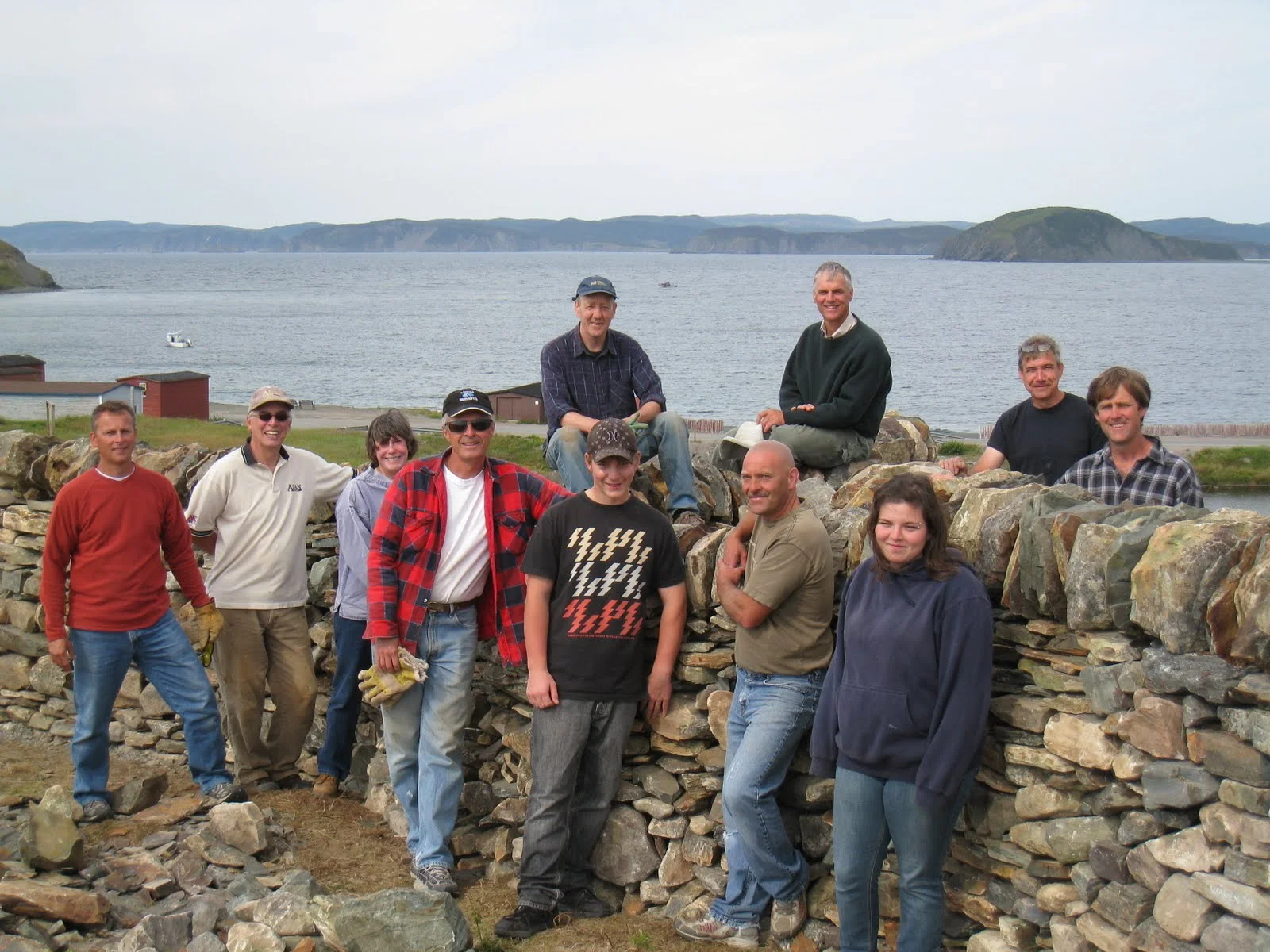While driving through Sweden on the way to Norway I saw this pair of stone sculptures along-side the canal in Uddevalla. The chair, and “room”, are assembled from carved and broken slabs that are bolted together by threaded rods. I think the combination of natural forms and carved, polished surfaces on the same stone is very effective. Artist unknown.
Read More5,000 years ago, in the land that is now Denmark, the dead were entombed in boulder chambers. Dolmens, as they are known to archaeologists, were once covered with earth mounds. Exposed by erosion and excavation, many are now visible on the landscape. I’m intrigued by these constructions. A three-boulder base supports a one-boulder roof. The simplest of forms proves to be the strongest and most durable. Dolmens, like the ones at Lindeskov, were reused over many centuries.
Read MoreCultivated land is a handmade environment. In centuries past, the face of Newfoundland was shaped by domestic agricultural activity. While many of the stone walls built during those times have lost their stature as fences, their presence remains a defining characteristic of the land. The close attention that farmers paid to their surroundings is comparable to the awareness artists bring to their work. Dry stone construction is a logical medium of expression for an artist working in the landscape.
Read MoreThe trees in the parks of Helsinki were beginning to show signs of awakening from their winter sleep when I arrived here early May. Today, my last day in Finland on this trip, they are flush with lush green leaves. I leave behind good friends, old and new. It’s been an exciting few weeks of city life. The Kerava Art Museum exhibition is now open to the public until August 28 when the artist’s pieces will be dismantled and moved, or recycled. I’m pleased with the way my two works came out. ‘L.E.M.’ is the small stone and steel construction displayed inside the museum in partnership with Tristan Hamel’s silk-paper globe. Outside, ‘Wishing Wells’ invites museum-goers and passer-by’s to walk through and around its canyons and cavities.
Read MoreBelow is the gist of my presentation for the artist’s seminar that preceded the opening of the show at Kerava Art Museum yesterday. The title and theme for this exhibition is ‘Hole in the Universe’. I don’t know how it sounds in Finnish but the word ‘hole’, in English, can be heard as ‘whole’; with a ‘w’. So the title, when spoken, can be interpreted in two ways. Both are interesting concepts to ponder, and respond to by making art. A hole can be a void, a container or a passage way. To become whole in the universe, complete in mind, body and soul, is perhaps the ultimate artists’ quest.
Read MoreThe techniques used to set stones in relation to one another can be varied. The sizes and shapes of the stones in any supply are often the final determining factor in the design of a dry stone structure. The supply limits the possibilities, focusing the process of design on what is doable. Limits actually increase the potential for a successful outcome. By first assessing the qualities of the available stone, a more ornamental or contemporary design might be considered and pursued.
Read MoreThe exhibition, brought to being by sculptor and professor of Environmental Art Markku Hakuri, focuses on the human and the surrounding universe poetically through surprising spatial experiences. On this trip Hakuri has invited his colleagues, renowned environmental artists Juliane Stiegele from Germany, Daniel Snow from the United States and Michal Cimala from the Czech Republic. A Hole in the Universe is born when the world is nudged off its usual orbit and when it is time to see and understand differently.
Read MoreThe dry stone sculpture rising out of the lawn outside Kerava Art Museum is beginning to attract local attention. People on their way to work are slowing down as they pass. Some stop and ask what’s happening. I learned through a student interpreter that one fellow said he liked seeing natural stone being used, that every one has a unique and beautiful shape. The people of Finland are surrounded by rock. Even in central Helsinki, bedrock outcrops are everywhere. Stone is only surpassed by forest and water in defining the nature of the landscape, and the psyche of the Finns.
Read MoreThe first full day of sculpture making at Kerava Art Museum brought one form to completion. Because this is a temporary exhibit, I’m building directly on the lawn grass. The granite pebbles and cobbles are easy to handle and a nice change of pace from heavy lifting, even though I do have to spend most of the day on my knees. Their smoothness makes them a bit slippery. I wouldn’t recommend using them this way for a permanent construction. This type of arrangement is like making a big ring cake out of small potatoes. Thanks to students Lauri, Hannah and Iisa for set-up assistance. And to Jenni M. for stone shifting.
Read MoreYesterday, Professor Markku Hakuri took me for a train and bus ride to check out the site for my installation at the Kerava Art Museum. This morning I went ten miles outside of Helsinki to a look at gravel pit. A ‘tailings’ pile I found there has the right ingredients for making a piece that combines twelve hollow cones into a mound shape. Because a group of university art students will be helping me, it’s important that the stones be easily shifted and lifted by hand, and the cones and mound be definable with lines and guide frames. This afternoon I made a 3-D sketch in clay of the design I’ve been working on in my head for the past couple of days.
Read More








